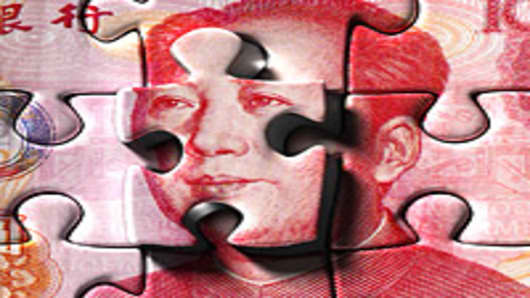A year of change is about to begin in China. As People’s Congress convenes in Beijing, the vast nation is preparing a shift from taming inflation to stabilizing growth.
Next week the National People’s Congress (NPC) will convene in Beijing. As some 3,000 delegates gather to the 10-day annual event, the more-or-less-informed observers in the West are betting that China is about to suffer a “hard landing.”
It may be useful to recall that when the world economy was amidst its free fall in fall 2008, many of the same observers were confident that China faced imminent collapse, plummeting growth, divisive riots and social chaos.
Sure, China is at a new crossroads, but the sense of gloom and doom misses the point.
A new privatization push
The NPC 2012 heralds an extraordinary year of change, both cyclically and structurally. It is only appropriate that it is also the 20th anniversary of Deng Xiaoping’s famous “Southern Tour,” which unleashed a new round of reforms in China.
A month ago, the State Council defined the execution of a new round of privatizations as the paramount priority among all planned reforms in the ongoing year. The “New 36 Clauses” is essentially a prudent but practical plan to push privatization in state-owned assets in monopoly sectors, including railways, energy, financial, telecoms, education and healthcare.
These plans are not new. But times are changing. Few years ago, the world economy was still amidst the “flat world” of rapid global growth. As long as the party lasted and the band played on, local governments and state-owned enterprises (SOEs) had few incentives to privatize.
Today the world is curved, lumpy and unpredictable. Global growth is slowing down. The Eurozone crisis has barely begun. In the U.S. the hangover will hit home after the elections. And money presses are overheating across the West.
In China, the adverse impact of the ongoing global crisis has been most detrimental with the local government debt.
Overcoming local government debt
Amidst the global crisis in fall 2008, China introduced a huge $586 billion stimulus package. It was designed to upgrade and expand the nation’s infrastructure, especially through transportation networks.
The injection of liquidity sparked great confidence domestically and allowed for sustained growth. As with recovery efforts in the West, the trade-off was that some liquidity did not end in productive uses but in market speculation.
In the end, local government debt rose to $1.7 trillion by the close of 2010, accounting about a fourth of China’s GDP.
Now the party is over and local governments seek adequate funding for their infrastructure projects. Land sales revenue is decreasing, and government financing is tight. Meanwhile, regulators are busy cleaning up old loans made to local government financing vehicles.
While growth lingers under austerity programs in the West, China will manage its debt via growth – but with different growth.
Debt management via growth
Unlike in the past, local governments have a real incentive to implement the kind of privatization measures that central government has been promoting for years. Concurrently, private investors can gain access to some of the sheltered sectors.
A month ago, China's Premier Wen Jiabao argued that the debt is at an "overall safe and controllable" level, that funding for key projects would be ensured and that applying the brakes to the problem would be done in a way that will avoid systemic risks.
What facilitates the process is the simple fact that China continues to be backed by $3.2 trillion of foreign reserves. Also, recently China's central bank announced it would lower banks' reserve requirement ratio (RRR), underscoring efforts to ease short-term credit crunch and secure growth.
The cut was the second of its kind in three months. As RRR dropped by 50 basis points to 20.5 percent for large commercial banks and 17 percent for mid- and small-sized banks, it unleashed almost $65 billion in capital into the market.
Moreover, local government financing reform is proceeding in the ongoing year. While it is likely to be gradual, it is expected to result in an increase of local government bond issuance, while more local governments will be allowed to issue bonds on their own.
A year of massive change
But the NPC 2012 will feature more than just privatization reforms. In the past few years, China’s official annual growth target has been 8 percent; now it may be at 7.5 percent.
The budget deficit target is also likely to be upped by 0.5-0.7, from the 1.1 percent last year. It reflects more expansive fiscal policy, while setting the stage for tax reforms, which can reduce fiscal revenue growth.
Additionally, the NPC is likely to set a slightly higher (CPI) inflation target, and expand tax reforms.
In the past few years, the NPC has increasingly become a forum in which the delegates express their views on pressing economic and social issues, while officials disclose working plans for the coming year.
By the fall more than half of China’s political leadership will be replaced. But may be even more important is that these political shifts at the top move in parallel with economic changes in China’s provinces, local governments and megacities.
Dan Steinbock is research director of International Business at India China and America Institute (USA), visiting fellow at Shanghai Institutes for International Studies (China) and in the EU-Center (Singapore).


